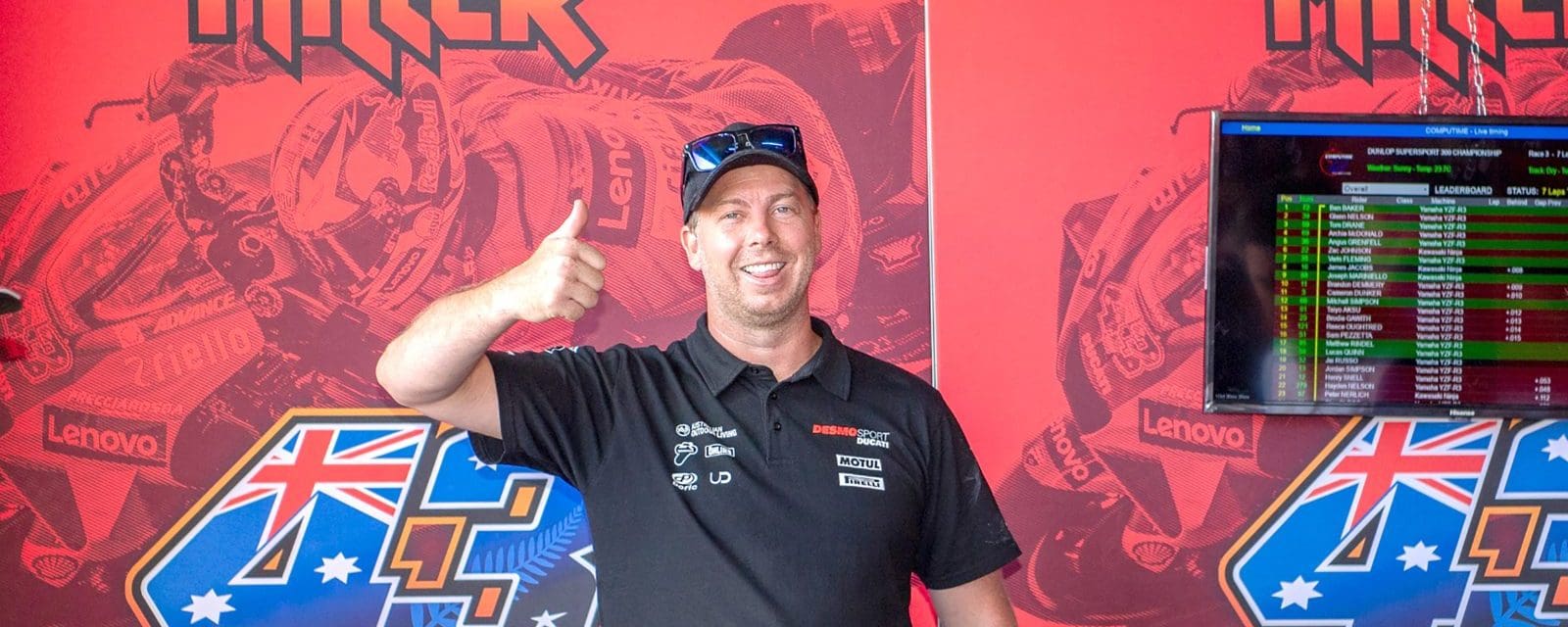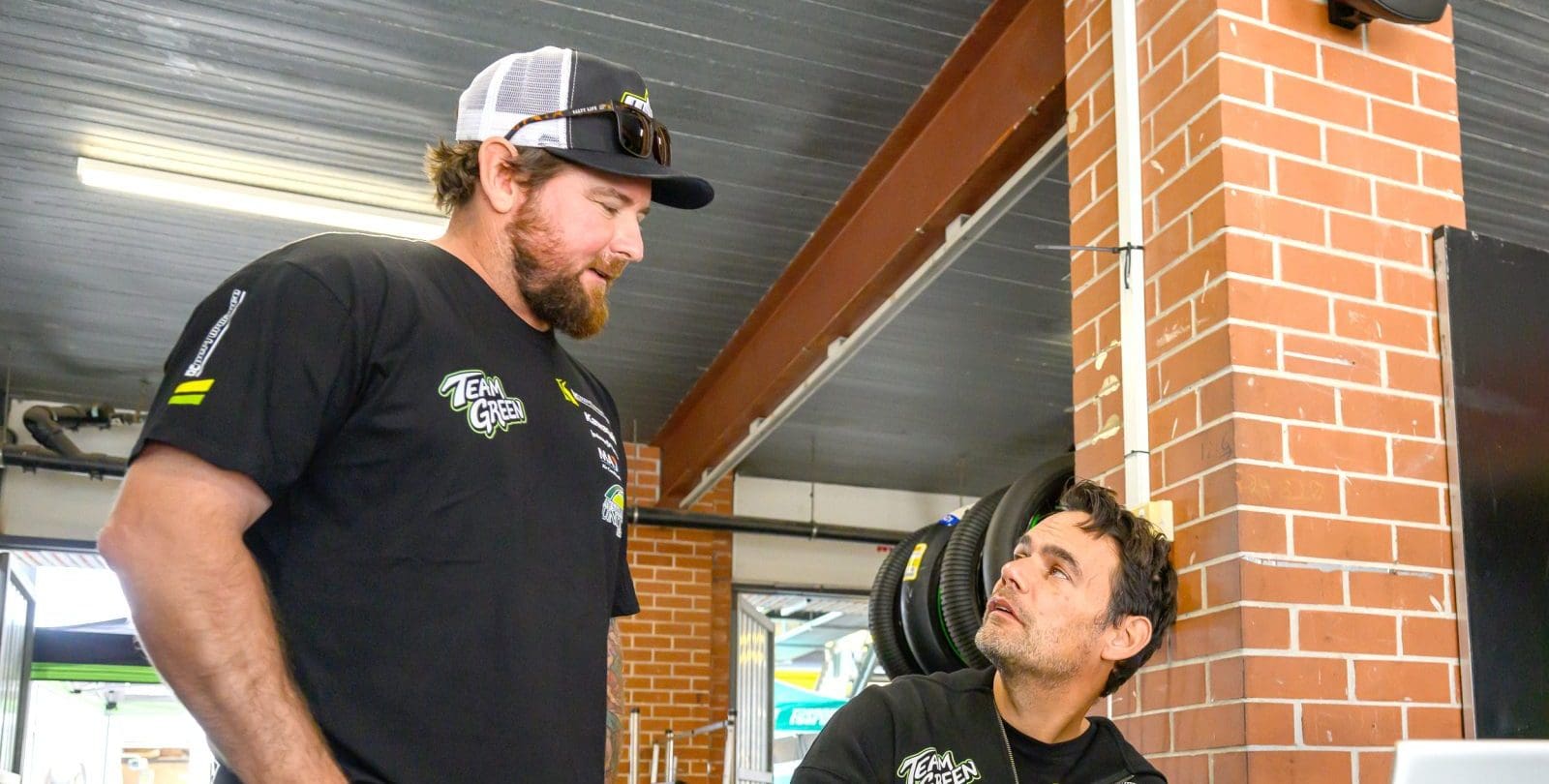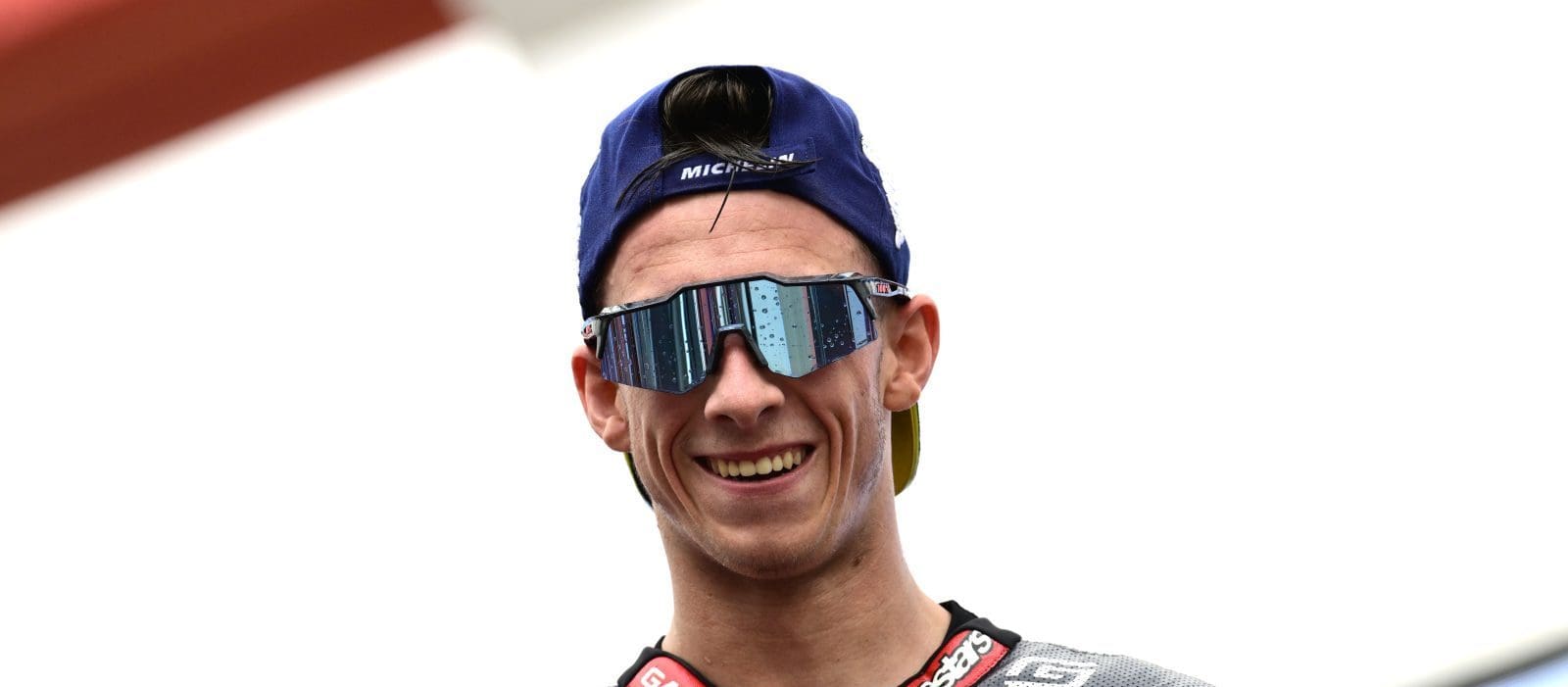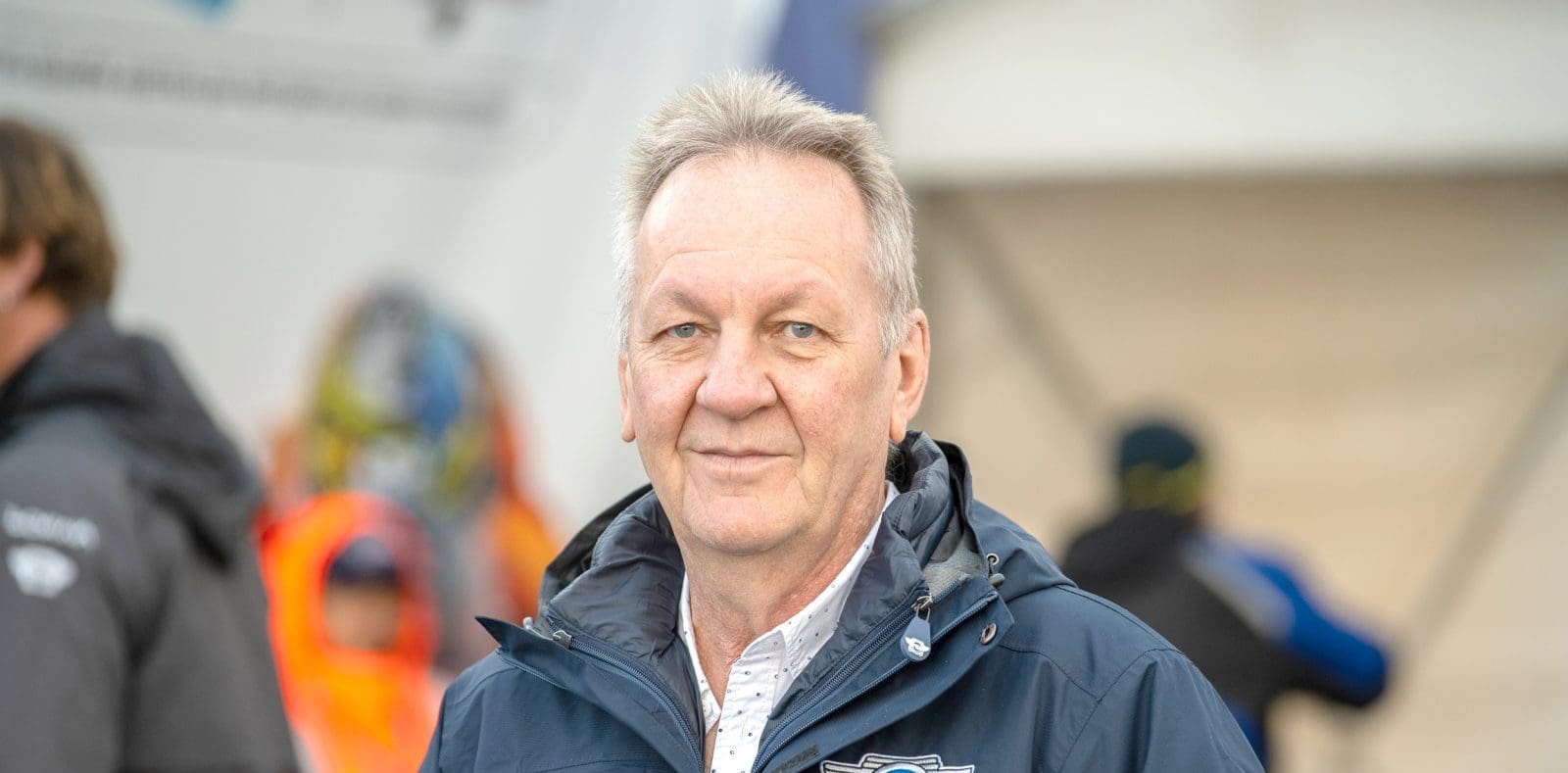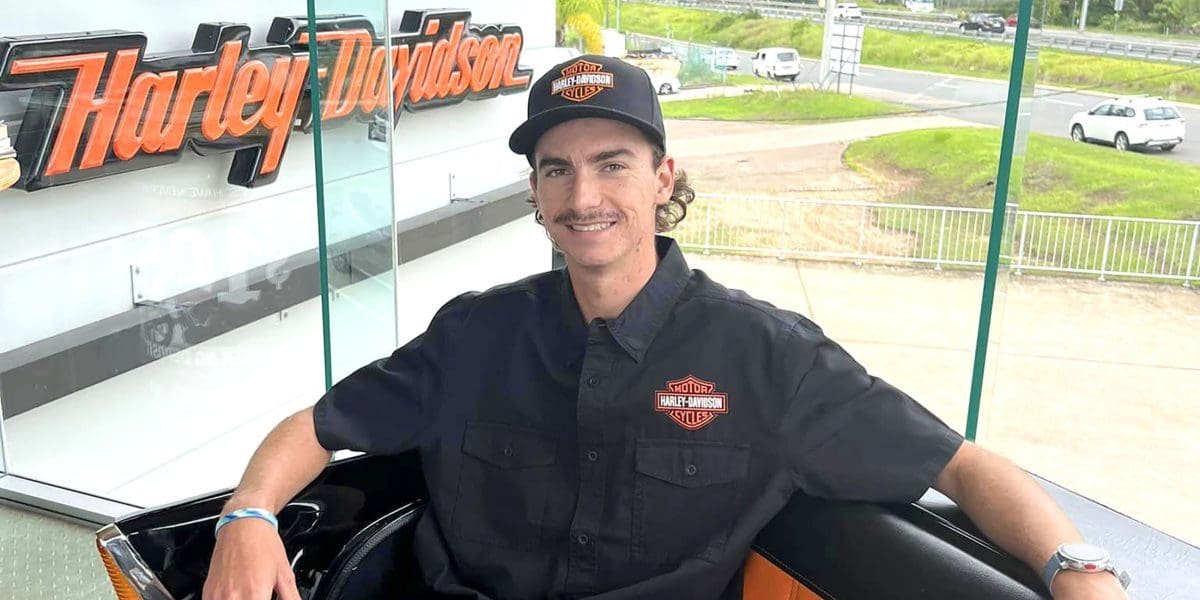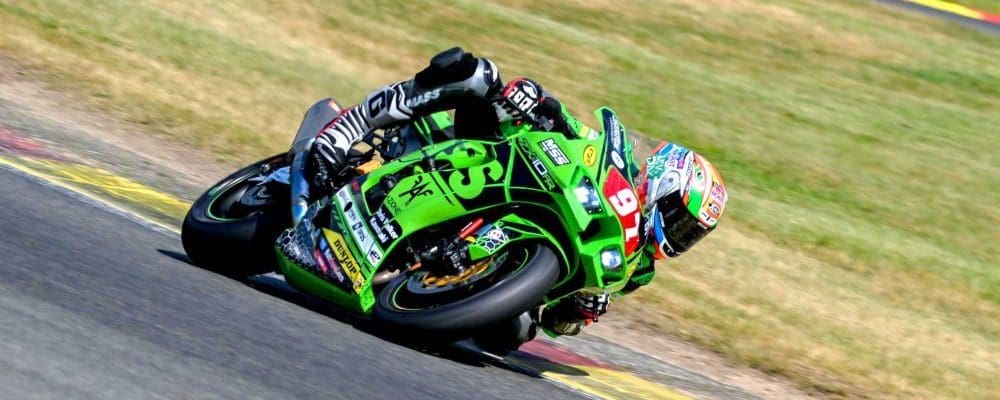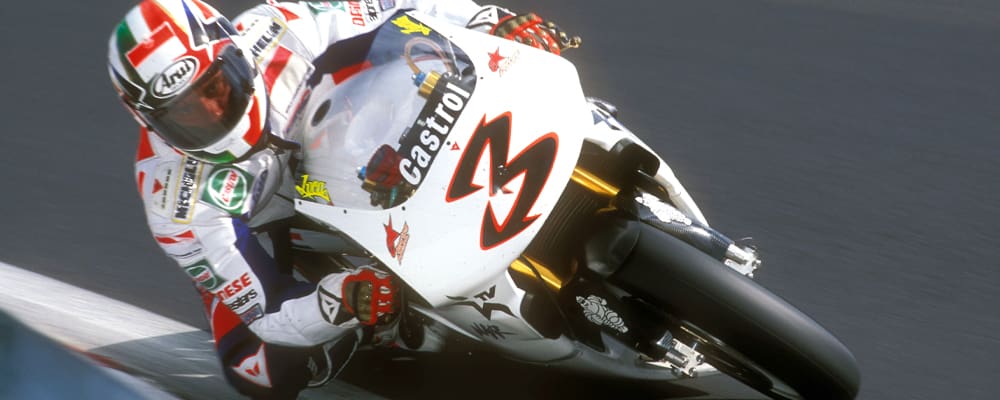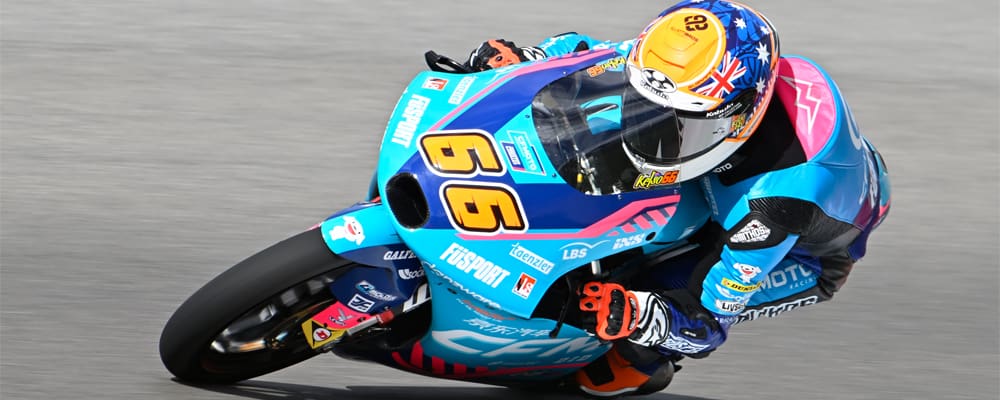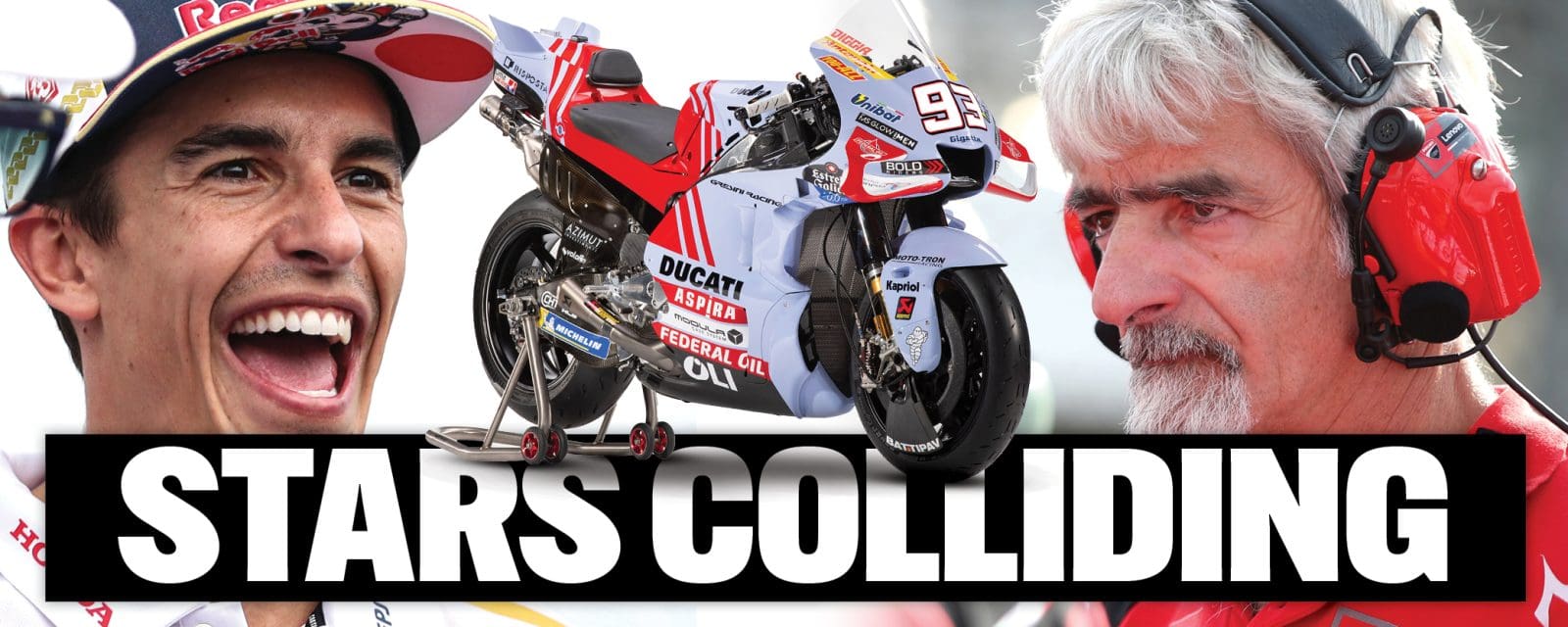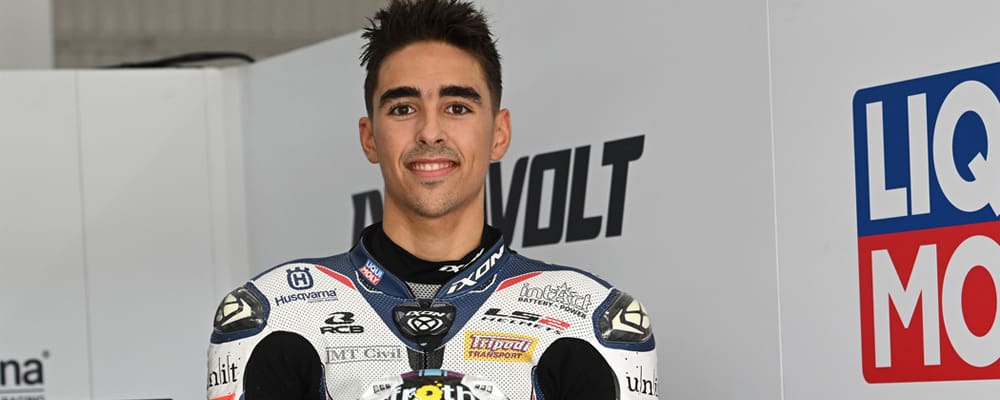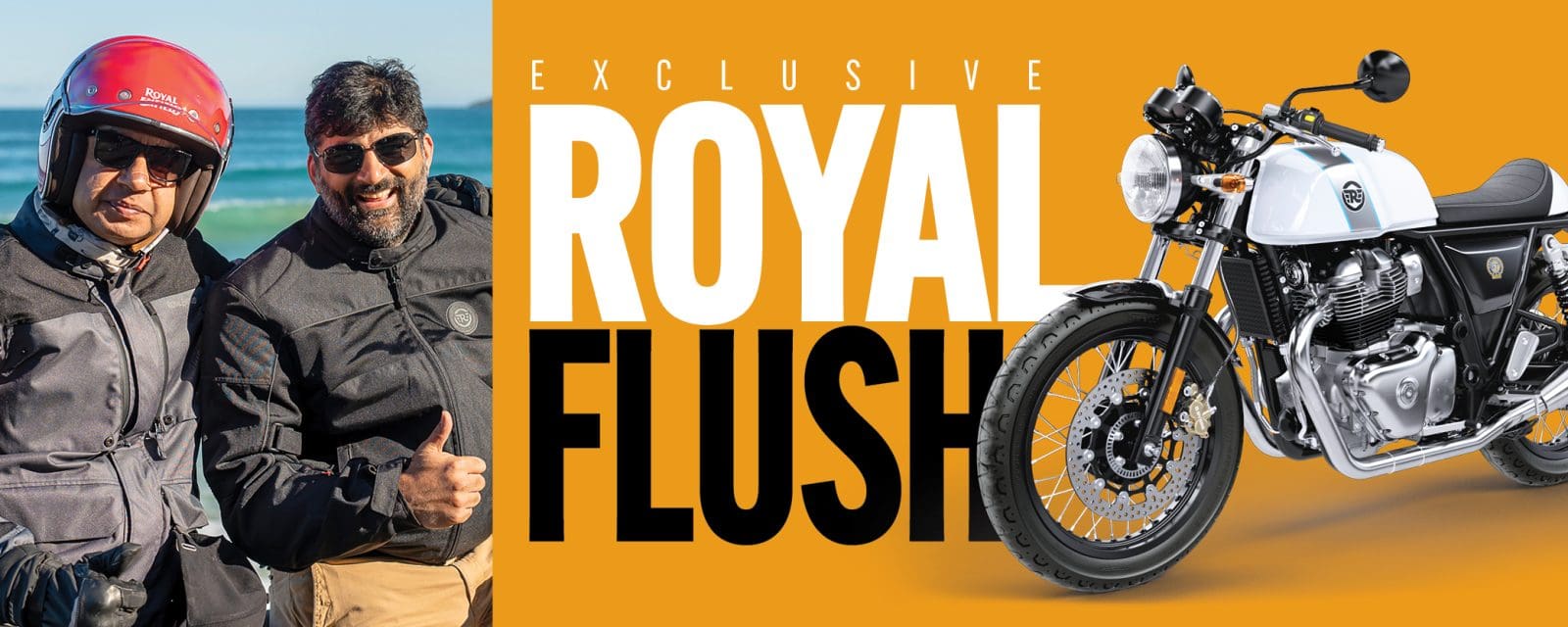From team owner at Motologic to crew chief to Troy Bayliss, what are the biggest changes in operating the garage?
I’ve come from running a team with pretty much the same staff for 15 years – some five years, but most 15 – and you were in an environment where you are safe and you’re surrounded by people who are confident and comfortable with each other. So there is a whole new environment to adapt to in that respect.
Then there is a new rider. Generally speaking, what you find as a technician working with riders is that, when they’re explaining what they feel and think is needed from the motorcycle, it can quite often be the very opposite to the solution. Sometimes you have to take what they say and then interpret that into mechanical language. It’s a process you go through with any rider, and with moving teams this year that process began again – learning how to work with someone different.
Tell as about the comparisons between Troy Bayliss and, say, Troy Herfoss.
They are so, so different in the way they operate.
Troy Herfoss, he’s not massively technical, but extremely sensitive with his feel and what he wants from the motorcycle. He’s able to explain what that is and what he’s after – or what the problem is.
Then, with Troy Bayliss, he has a huge amount of experience and knowledge built up over years with different riders and teams, all at such a high level of performance. Now with his son [Oli in Supersport 300], he’s been making changes to a motorcycle based on input from him. It’s changed his perspective on communication a lot.
Initially with Bayliss, it was very intense and quite difficult, I suppose you’d say. But as we’ve built a relationship and started to strengthen that understanding and confidence with each other, things are progressing well. That goes for the whole team – myself, Ben [Henry] and Byron [Draper].
It’s been a big learning process, understanding what Troy is saying and interpreting that into what’s needed.
Tell us about the call from Desmosport.
I had absolutely no plan to be doing this. I was out of this scene. When Troy rang me late last year and asked if I was interested in working with the team – and that’s how he put it to me, working with the team – I initially said no. Then he said, ‘I’m going to be riding.’
That changed everything. It’s not very often you get to work with someone like him, and working with this Ducati is quite unique. I was really chuffed and excited to be part of the program. I like working with Ben a lot, and Byron from Öhlins [Troy’s technician from his WorldSBK days].
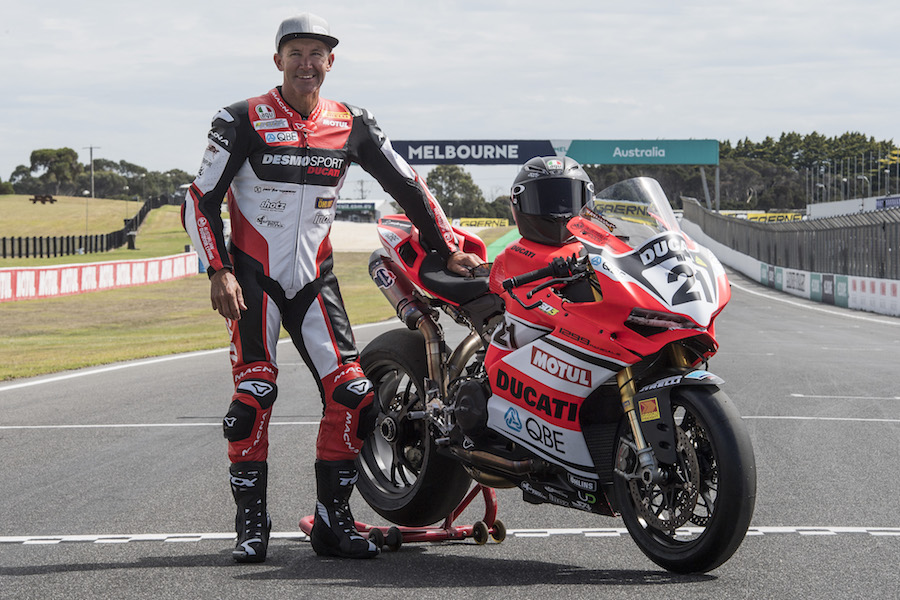
Did you believe the project could be successful?
One hundred per cent.
We discussed it as a group and initially Troy was very anxious to get on the bike and prove – not to everyone else,
but to himself – that he was still fast enough.
That came with some consequences; he had a big crash at Wakefield Park the very first day we got together.
But that’s all in the past and he knows 100 per cent that he is well and truly fast enough. We all believe 100 per cent that he’s well and truly fast enough, we just need to give him a motorcycle that’s capable of running with these front guys and being consistent throughout a race.
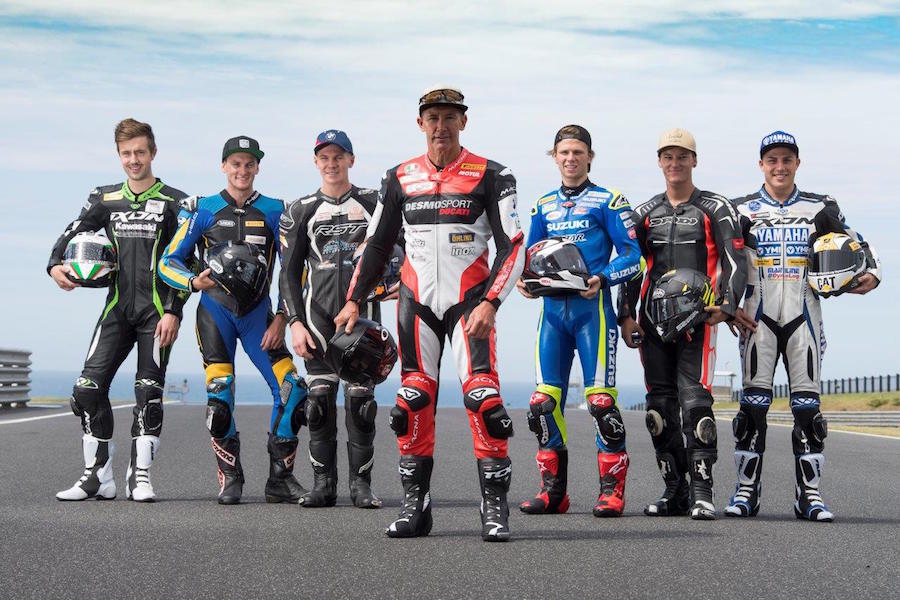
How do you learn a new bike? Could you draw on your own previous Ducati experience?
That was many, many years ago now… but I do reflect on that time in my own memory and what we had with Ducati and Jamie [Stauffer]. I think it’s just all the accumulated years of experience and then learning the bike as fast as we can.
It’s a Ducati – for me that means you have to give it a lot of care and attention. It’s not a Japanese bike; a Japanese bike you can throw it together and it will run all year. You just need to be a little bit more careful with (the Ducati) and if you are, it will reward you.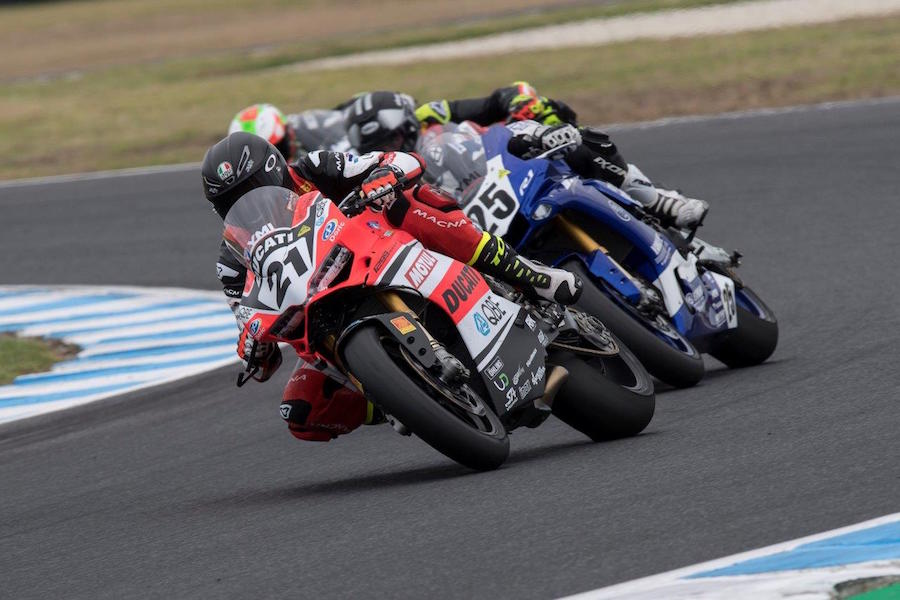
Interview Matt O’Connell


